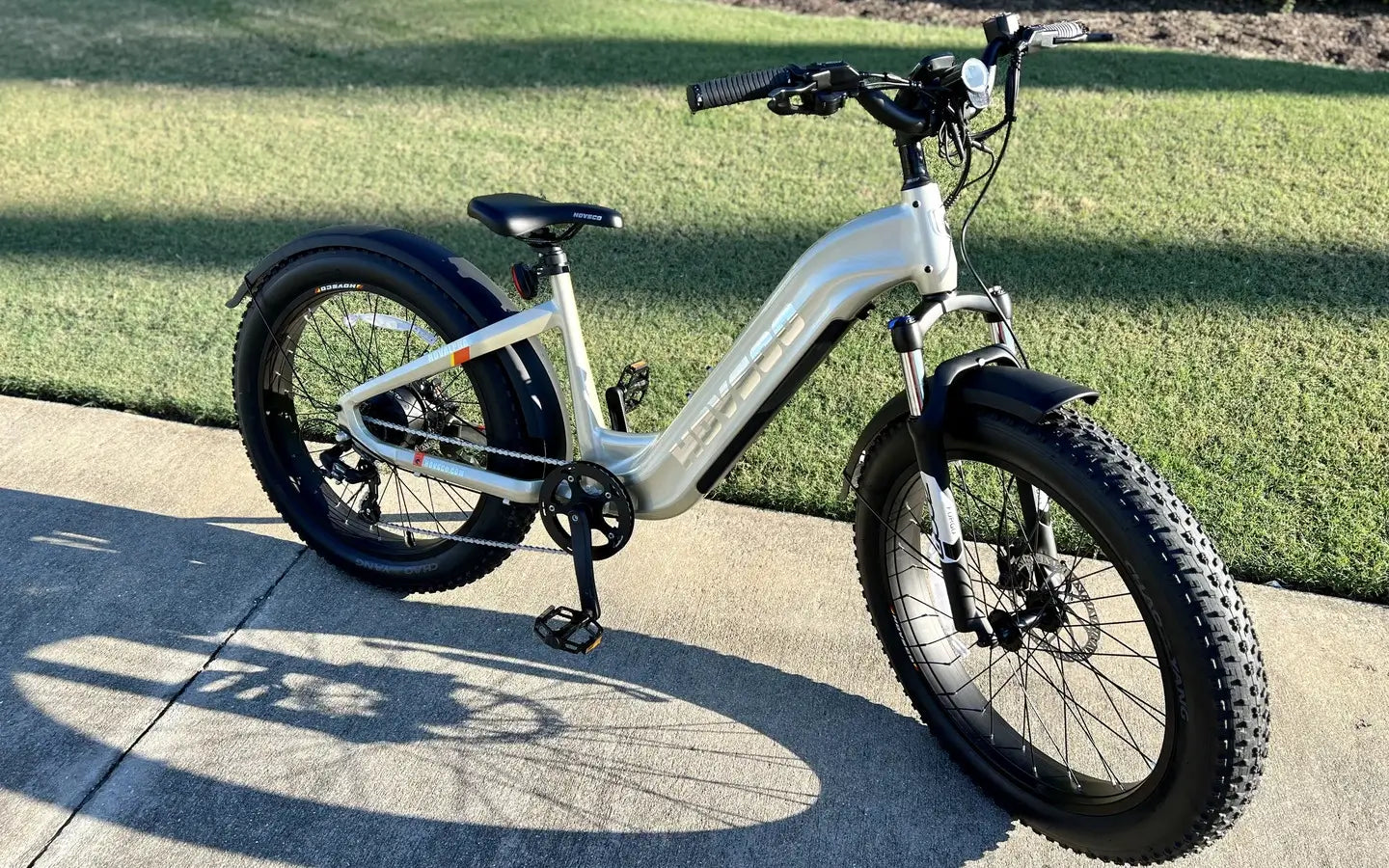
- by LiuJiazhu
How Do Full Suspension Ebikes Handle Rocky Terrain?
- by LiuJiazhu
Full suspension ebikes handle rocky terrain by using dual suspension systems that absorb shocks from both front and rear wheels, maintaining tire contact and traction over uneven surfaces. This results in enhanced control, stability, and rider comfort, allowing confident navigation of jagged rocks, drops, and technical trails while reducing fatigue and improving safety.
Full suspension ebikes combine front forks and rear shocks that work in harmony to absorb impacts from rocks and rough ground. This dual suspension keeps both wheels grounded, improving traction and preventing the bike from bouncing uncontrollably. The suspension travel, typically ranging from 120mm to 170mm, cushions sharp jolts and smooths out the ride, allowing riders to maintain speed and control on challenging rocky descents. Additionally, the electric motor’s power assists in climbing steep, uneven terrain with less effort.
Chart: Suspension Travel vs. Terrain Type
| Terrain Type | Suspension Travel Needed (mm) | Key Benefit |
|---|---|---|
| Moderate Trails | 120–140 | Smooths small bumps and roots |
| Technical Rocky Trails | 150–170 | Absorbs large drops and rocks |
By enabling the rear wheel to move independently of the frame, full suspension ebikes maintain constant tire contact with rocky surfaces, boosting grip and reducing wheel slip. The front suspension fork absorbs initial impacts, while the rear shock smooths out follow-up bumps, preventing loss of control. This translates into better balance and confidence when navigating technical sections where precise handling is critical.
Effective full suspension ebikes feature adjustable air or coil shocks with tunable rebound and compression damping to match rider weight and trail conditions. Proper sag settings (typically 25-30%) optimize suspension responsiveness. Longer travel forks (150mm+) and rear shocks provide the necessary cushioning for jagged rocks and drops. Quality suspension components reduce rider fatigue by absorbing vibrations and impacts that would otherwise transmit through the frame.
Full suspension ebikes are designed with geometry that balances weight centrally, often with mid-drive motors, to improve maneuverability and stability on technical terrain. A lower center of gravity and slack head angles increase confidence on steep descents and rocky switchbacks. This design synergy allows riders to react quickly to obstacles and maintain control, reducing the risk of crashes on unpredictable rocky trails.
Full suspension ebikes outperform hardtails on rocky terrain by providing superior shock absorption and traction. Hardtails, with only front suspension, transfer more impacts to the rider and risk losing rear wheel contact, causing instability. While hardtails are lighter and more efficient on smooth climbs, full suspension ebikes offer a safer, faster, and more comfortable ride on technical rocky trails due to their ability to smooth out harsh impacts and maintain traction.
Chart: Full Suspension vs. Hardtail on Rocky Terrain
| Feature | Full Suspension | Hardtail |
|---|---|---|
| Shock Absorption | Front and rear suspension | Front suspension only |
| Traction | High, both wheels grounded | Moderate, rear wheel may bounce |
| Rider Comfort | Excellent, less fatigue | Lower, more vibration |
| Weight | Heavier | Lighter |
| Cost | Higher | Lower |
The electric motor on full suspension ebikes provides essential torque to power over steep, rocky climbs that would otherwise demand significant rider effort. Mid-drive motors optimize weight distribution and gear efficiency, enabling smooth, controlled ascents. Electric assistance also helps maintain momentum through technical sections, reducing rider fatigue and enhancing overall trail performance.
When selecting a full suspension ebike for rocky terrain, prioritize models with adjustable suspension travel between 150mm and 170mm to absorb large impacts. Look for high-quality air or coil shocks with tunable damping and sag settings. Choose a bike with a mid-drive motor rated 500W or higher for ample torque and balanced weight distribution. Ensure the frame geometry features a slack head angle and low center of gravity for stability. Hydraulic disc brakes with large rotors (180mm+) are essential for reliable stopping power on descents. Brands like HOVSCO offer innovative designs combining these features with safety and durability, ideal for rugged rocky trails.
“HOVSCO’s full suspension ebikes are engineered to master rocky terrain by harmonizing advanced suspension technology with powerful electric motors. Our focus on adjustable suspension settings and balanced geometry ensures riders experience superior traction and control, even on the most technical trails. This combination reduces fatigue and enhances safety, allowing riders to push their limits with confidence.” – HOVSCO Engineering Team
Q: How much suspension travel do full suspension ebikes need for rocky terrain?
A: Ideally, 150mm to 170mm of suspension travel is recommended to absorb large impacts and drops on rocky trails.
Q: Can full suspension ebikes handle steep rocky climbs?
A: Yes, the electric motor provides torque to assist climbing, while suspension maintains traction and control.
Q: Are full suspension ebikes heavier than hardtails?
A: Yes, due to additional suspension components, but the motor compensates for the extra weight during climbs.
Q: How does suspension adjustment affect rocky terrain riding?
A: Proper adjustment of sag, rebound, and compression optimizes shock absorption and bike responsiveness for different trail conditions.
Q: Do full suspension ebikes require more maintenance?
A: They require more upkeep due to complex suspension systems but offer superior performance and safety on rocky terrain.
Share:
What Are The Best Full Suspension Fat Tire Ebikes?
What Are Affordable Full Suspension Electric Dirt Bikes?